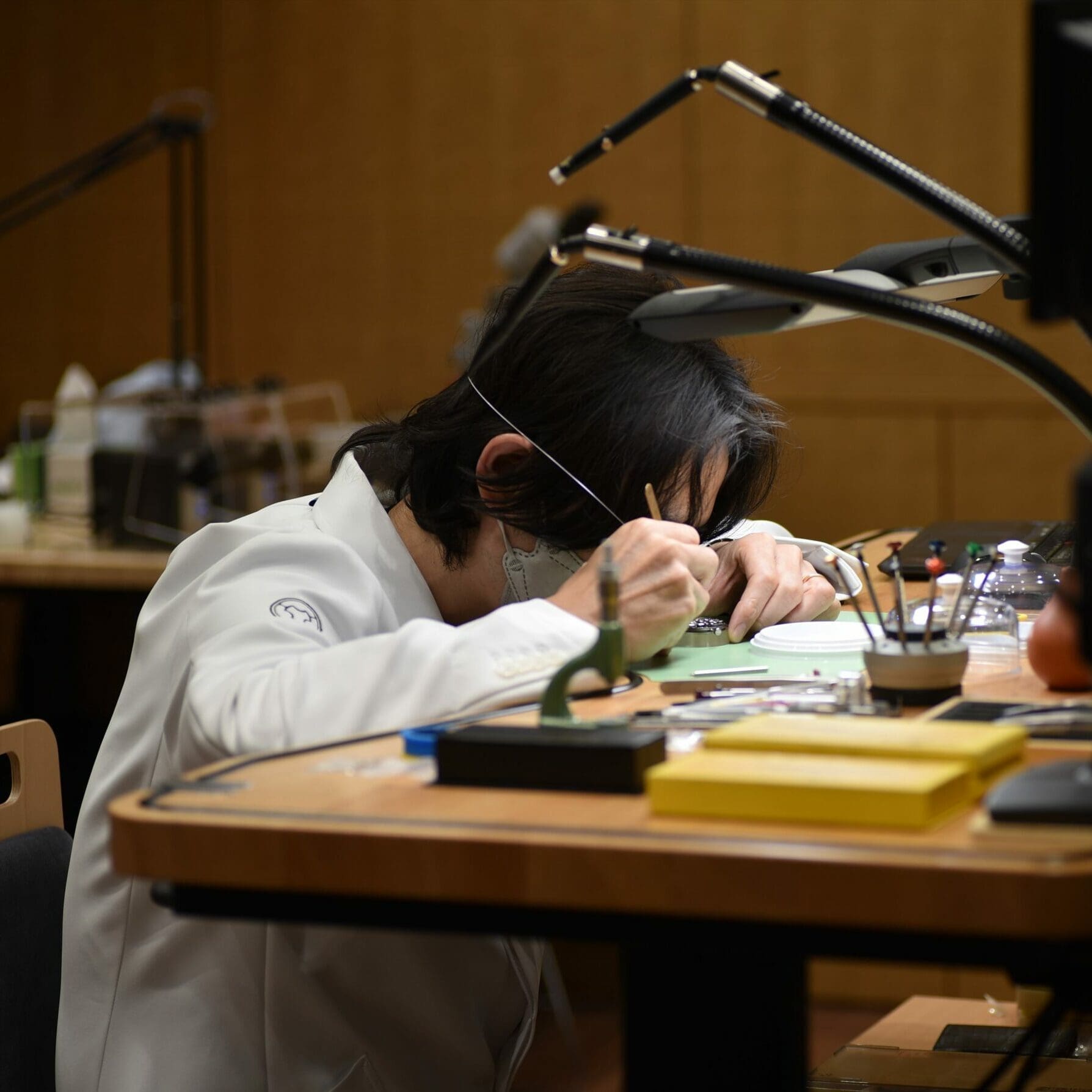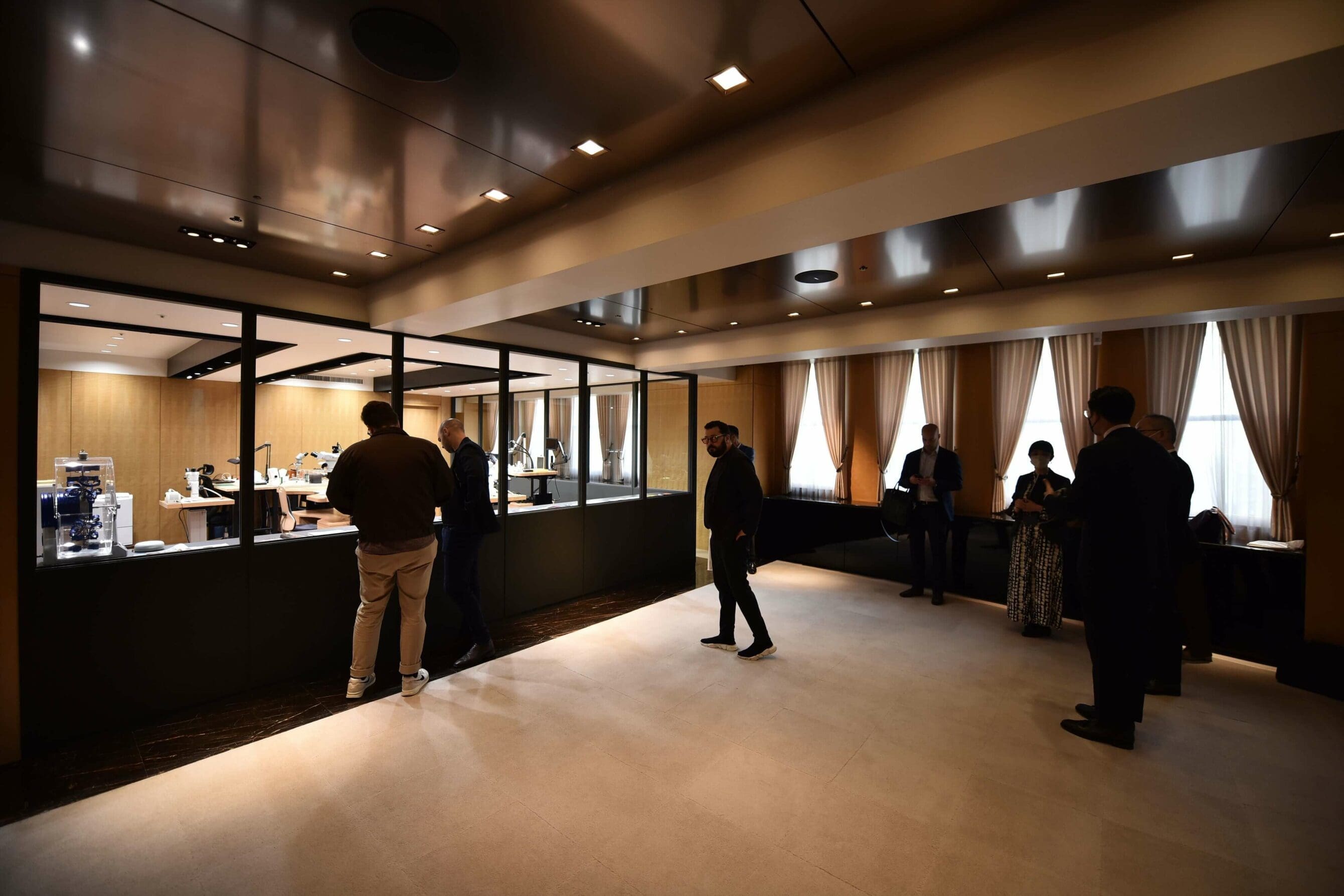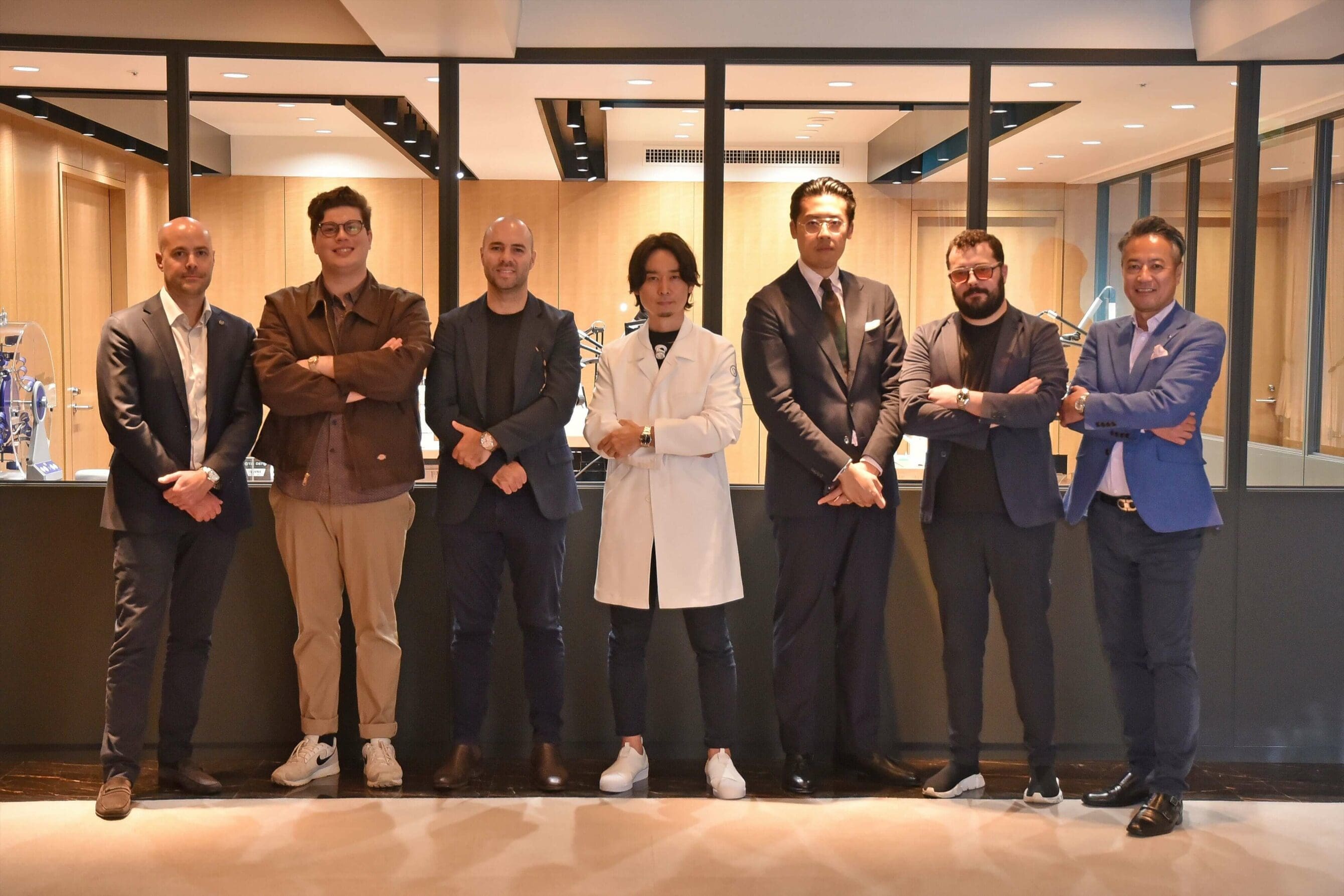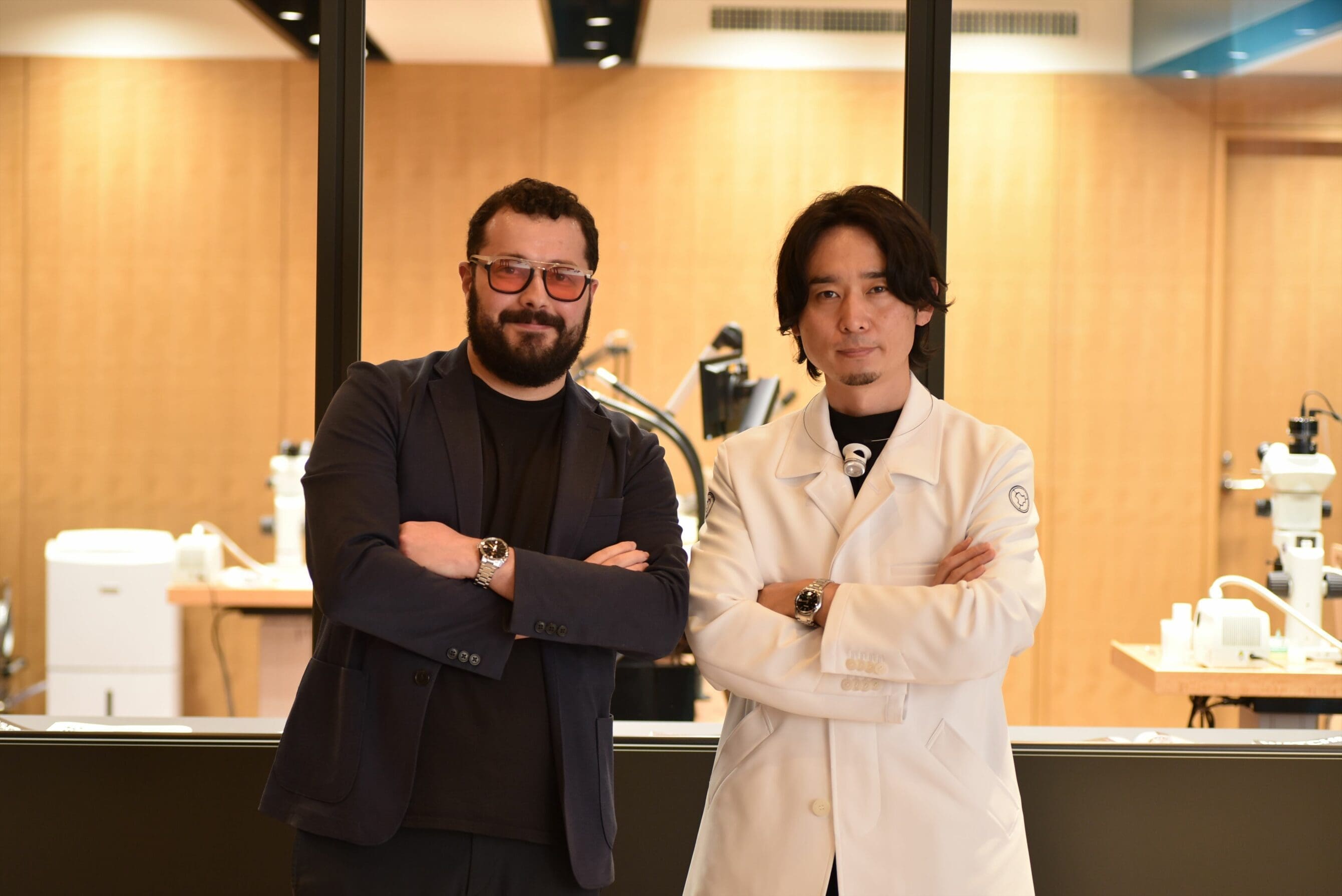Grand Seiko Manufacture Tour Part 4: Chatting with the man behind the Kodo at Atelier Ginza
Zach BlassWe are nearing the end of this Grand Seiko Manufacture Tour series. In part one I detailed my visit to Grand Seiko Studio Shizukuishi, the home of all things 9S mechanical, in Morioka. Part two detailed my return to Ginza and my visit to the incredible Seiko Museum Ginza. After leaving the museum, in part three I shared my experience at the Seiko House Ginza (Wako Building) where we were able to see the unique opportunities this Grand Seiko flagship of flagship offers first-hand – such as the Grand Seiko Bespoke program. We also were able to get a closer look at the famed Hattori clocktower as well. Today, I want to dig into my visit to the Atelier Ginza within Seiko House Ginza.
Located on the 7th floor, and accessible by invitation only, we step out of the elevator and see a large empty space where events can clearly be held. But, within a smaller space on the floor, almost like looking at fish in an aquarium, I see a masked watchmaker at work at a bench. After seeing the watch he was currently assembling, I knew immediately I was watching Takuma Kawauchiya himself assembling the 9ST1 movement he designed for Grand Seiko’s first high complication watch: The Grand Seiko SLGT003 ‘Kodo’ Constant Force Tourbillon. Considering that this workshop is the place where Grand Seiko’s most complicated watches will be assembled, it was baffling how humble and sterile the space was – clearly a serene space clear of distraction.
After performing some assembly work on the calibre, Mr Kawauchiya was kind enough to step out of the Atelier Ginza workshop to greet us and introduce himself. After all of us on the tour were able to grab a photo with him, we then proceeded into a conference room for an interview session to get a deeper insight into the new Atelier Ginza, how it operates, and who operates within it.
Compared to the Shizukuishi Studio in Morioka, and the Seiko/Epson facility in Shiojiri (spoiler alert for the final part of this series), the Atelier Ginza finds itself located in a very different environment – located not only within a bustling point of retail, but in the very lively and active city of Ginza. When asked about what it felt like to be working in the atelier, he was quick to point out the honour and significance of its location. Mr Kawauchiya explained: “It is a very special place, and I feel it’s a very unusual thing to work in an atelier like this. Firstly, this place is the birthplace of Seiko – something I am very happy and proud of.” Mr Kawauchiya then told us how the significance of the building and its location is a very stimulating thing, and that its spirit pushes him to work harder. His translator explained: “This building is stimulating for him because he gets a very special feeling from this building to concentrate on the watchmaking. This special power is here, he feels it every day.” Mr Kawauchiya then jumped in to explain himself: “I also like the sound of bells on the rooftop [from the clocktower] and every hour I can hear the beautiful sound, it’s very inspiring.” He then spoke to us about how special it is to be in a workshop dedicated to a new pinnacle of Grand Seiko watchmaking.
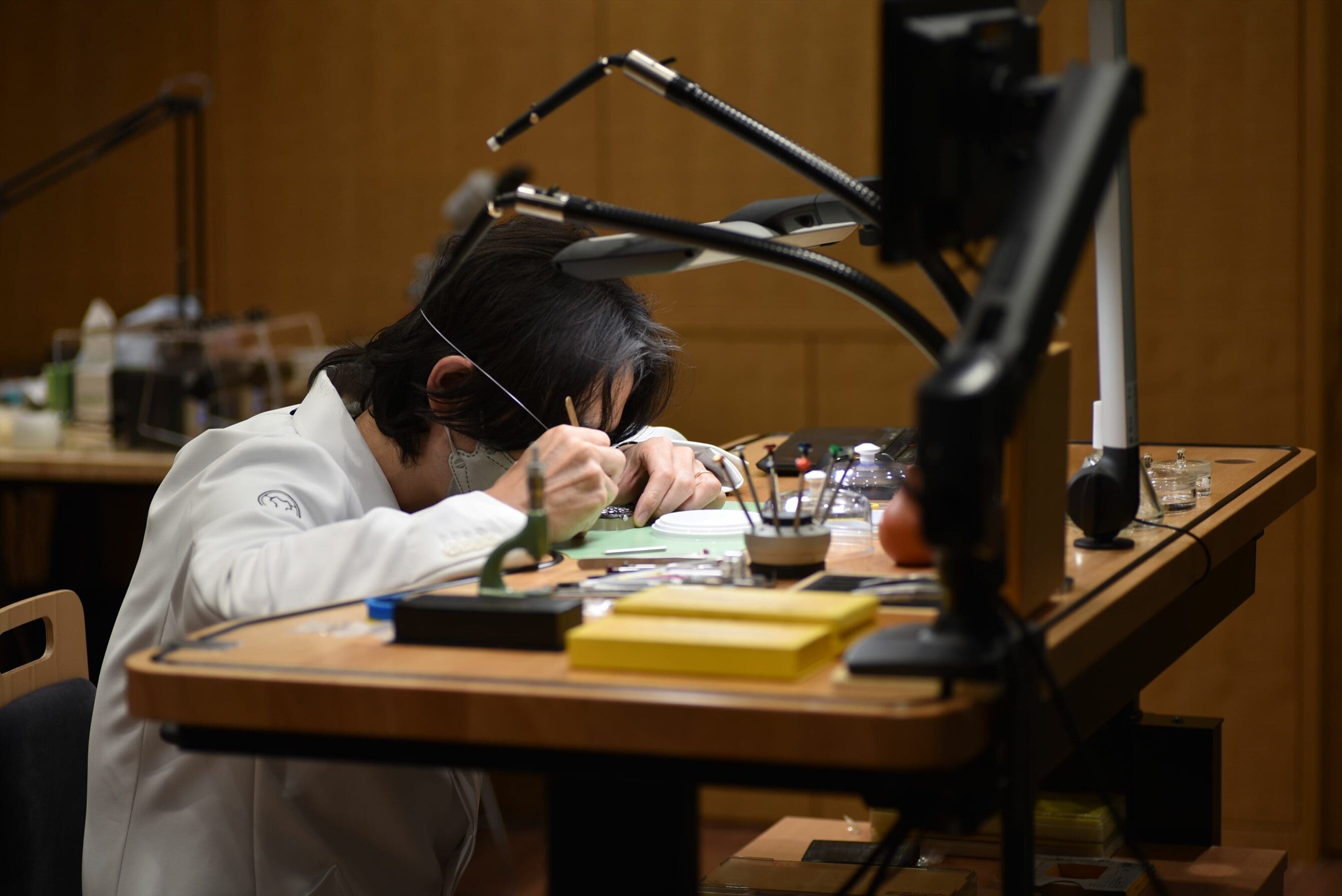
This all made sense, especially the honour of leading a workshop devoted to very complicated Grand Seiko watches. Only the best of the best will work out of this workshop, currently limited to watchmakers such as Mr Kawauchiya and his colleague Mr Hiroda. Mr Hiroda, we were told, has been a watchmaker with Seiko for 30 years. The translator explained to us the working dynamic between this incredibly talented pair of watchmakers. “Mr Hiroda is a great watchmaker, a contemporary master craftsman in Japan. He has been a watchmaker with Seiko for 30 years, so he’s very familiar with Seiko’s watch manufacturing”, the translator told us. “But, on the other hand, Mr Kawauchiya learned about watchmaking in a different way. So, their background is totally different but their relationship is very good. They work well together because Mr Hiroda can learn a lot of things from Mr Kawauchiya.” The fact Mr Kawauchiya, who has been with Seiko for 1o years, is able to surprise and inform a 30-year Seiko watchmaker with new ideas is indicative of not only the strength of his fresh perspective due to his less traditional path of musician-turned-watchmaker, but also of his high watchmaking IQ.
While visiting other studios, there were meister apprenticeship programs in action in which recognised watchmakers and artisans within the company take on an apprentice to pass along their skills and knowledge to. In the early stages of this rather new Atelier Ginza, which opened only last year, such a programs were not yet in action. Mr Kawauchiya, via his translator, explained: “Kodo is very difficult to assemble when compared to 9S and other calibres. So if a freshman enters this studio, it is impossible to make a Kodo. Mature watchmakers are needed to enter this studio. So some great watchmakers gather here and stimulate each other, but in this new studio there is no such mentorship dynamic – only colleagues collaborating together. In the future, I don’t know, maybe.”
It is important to note that it was explained to us that the Atelier Ginza is a point of assembly only, and that the workshop works closely with external departments. For example, the parts of a movement will come from Morioka and are also decorated outside of Atelier Ginza. These pieces, once finalised outside of Atelier Ginza, come to the workshop for their final assembly. An example of this dynamic can be seen from the evolution of the T0 concept constant force tourbillon calibre of Mr Kawauchiya’s design, to the 9ST1 inside of the SLGT003 ‘Kodo’. Mr Kawauchiya confirmed to me that the T0 concept calibre design was realised independently of the watch design team, but that he would later work closely with Grand Seiko Designer Akira Yoshida to perfect its design and align it further with Grand Seiko’s grammar of design. This involved changing the aesthetic, decoration, and size of the components seen in the T0 – in particular making components smaller and thinner in order to increase the comfort of the watch. This was achieved by reducing the thickness of the calibre by 0.2mm and the diameter of the calibre by 1.9mm – a significant difference in the world of watchmaking.
Clearly, we will all need to keep a close eye on projects to come from the Atelier Ginza. Unfortunately, Mr Kawauchiya was understandably not very forthcoming of what is in the pipeline – these projects are under lock and key. Seiko themselves have said that “the new studio aims to create truly unique and innovative timepieces of the highest order. Here, some of the finest designers, craftsmen, and watchmakers from the Seiko Group will work together to create, assemble, and adjust timepieces that highlight their creativity and expertise, all of which is underpinned by traditional Japanese aesthetics.” A ground-breaking constant force tourbillon, the first with both mechanisms on a single axis, has certainly set the bar very high. Who knows what we will see next. A perpetual calendar? A split-seconds chronograph? A chiming watch? It is all very, very exciting.




